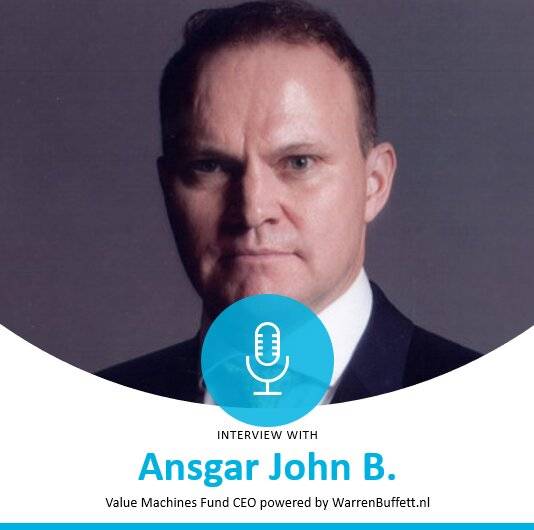Retail is a constantly evolving industry, driven by innovation, changing consumer behavior, and the integration of digital and physical shopping experiences. As technology reshapes how brands engage with customers, the role of brick-and-mortar stores continues to be questioned. Are we witnessing the decline of offline retail, or is it simply transforming into something new?
To explore these questions and gain valuable insights into the current and future state of retail, we have the pleasure of speaking with Cláudia Ramos, recognized as a Top Retail Expert 2025 and Executive Director at All About Retail. With her extensive experience and deep understanding of the industry, she shares her perspective on the challenges, opportunities, and innovations shaping retail today.
Let’s dive into the conversation.
Exploring the Future of Retail with Cláudia Ramos – Top Retail Expert 2025 | Executive Director, All About Retail
We begin by analyzing the current state of the retail sector. Do you believe physical stores will eventually disappear, or will they continue to evolve?
The retail industry is vibrant and ever evolving, characterized by dynamism, innovation, and professionalism. Retailers constantly strive to reinvent and modernize themselves, whether by setting trends themselves, or adapting to the latest consumer preferences.
In today’s omnichannel world, brands have a multitude of communication channels at their disposal to engage with customers, both online and offline. While online channels offer convenience and accessibility, physical stores provide an unique sensory experiences that cannot be replicated digitally.
Only within a physical store can customers fully immerse themselves in the brand’s identity and personality through tactile experiences with textures, evocative scents, and adjusted sounds. This immersive environment can be further enhanced by personalized service, fostering stronger customer relationships and loyalty.
Consumer behaviour studies indicate that despite the rise of e-commerce, a vast majority of customers will continue to shop in physical stores.
What are the strengths and weaknesses of physical retail compared to online shopping?
Online enables customers to integrate digital research with their in-store shopping journey. By providing access to product information, reviews, comparisons, and even virtual try-ons, brands enable informed purchase decisions before customers set foot in a physical store. This pre-shopping research enhances the in-store experience, allowing customers to focus on the visit sensorial experience.
Furthermore, a robust online presence across websites, apps, and social media platforms fosters a sense of community around the brand. These digital spaces facilitate two-way communication, allowing brands to engage with customers, gather feedback, and cultivate a loyal following. Online communities can be built through interactive content, exclusive offers, user-generated content campaigns, and direct engagement with customer queries and comments. An online community complements the in-store experience, creating a cohesive brand ecosystem that strengthens customer relationships and may result in brand advocacy.
However, in clothing, online retail faces the problem of the impossibility of products try-out and of the lack of tactile sensation of the fabrics and materials. The percentage of returns will continue to be a costly problem.
Consumer behaviour studies indicate that despite the rise of e-commerce, a vast majority of customers will continue to shop in physical stores.
What is the greatest challenge or weakness that the retail industry must overcome?
A solid challenge for retailers lies in the necessity of keeping effectively monitoring and adapting to evolving customer fashion trends, preferences, and consumer behaviour throughout the buying process. This includes understanding not only what customers are buying, but also how, when, and why they make their purchase decisions. This requires continuous analysis of market data, social listening, and customer feedback across all touchpoints.
Simultaneously, retailers must stay abreast of technological advancements and innovations across various operational areas. In sectors like textile retail, this translates to keeping pace with developments in new fabrics, sustainable materials, and advanced manufacturing techniques. It implies innovation that may lead to both environmental protection and cost reduction. This includes investigating more efficient production processes, optimizing supply chains, adopting renewable energy sources, and implementing circular economy principles. By embracing these advancements, retailers can not only meet growing consumer demand for eco-conscious products and practices but also enhance their operational efficiency and long-term profitability.
Physical stores must become sensory and emotional destinations, offering what online retail cannot replicate
In today’s retail landscape, what role does technology play in enhancing the customer experience and driving engagement?
Technology plays a pivotal role in modern retail, acting as a powerful tool to increase customer loyalty, enhance the shopping experience, and allow fluid and easy transactions. Seamless payment solutions, both online and offline (for instance self-checkout kiosks), are crucial for minimizing friction or pain points the purchasing process and maximizing customer comfort and transactions security.
Moreover, technology can significantly enhance the in-store experience. Interactive kiosks, mobile apps and digital displays can offer detailed product information, and even virtual trials on clothing, accessories, make-up, furniture, decoration. Customers will make more informed decisions and will engagement more with the brand.
I believe that product customization will be a strong trend. Generative AI will be able to design unique products (adapted to the client specific taste and preference) and personalized recommendations.
On the other hand, technology enables retailers to gather valuable data on customer preferences, behaviours, and purchasing patterns and trends. This data is useful to personalize marketing efforts, optimize inventory management, and create targeted loyalty programs.
Retail is no longer just about selling products; it’s about creating connections, experiences, and a sense of community
What are the key elements for a store to succeed? Is there a secret formula for retail success?
Operational efficiency is paramount: well-managed and replenished stock, seamless and fast payment methods, and in-store access to online resources.
But beyond simply fulfilling functional needs, physical retail thrives on designing sensorial and dazzling immersive experiences, that resonates with customers on an emotional level, while providing comfort and attention. When a client walks into a shop, it’ll be like entering an enchanted universe, where the client will feel marvelled and taken care of.
This involves a carefully cared store ambiance, integrating lighting, music, scents, and overall design, to create a distinct Look & Feel aligned with the brand’s identity and positioning.
Technology is not replacing physical retail—it’s enhancing it, making stores smarter, more engaging, and more efficient
What strategies drive customer loyalty, and how do you effectively engage and connect with your customers?
Retail is a people-centric business, built on the foundation of emotional connections between brands and their customers. When a customer identifies with a brand’s values, aesthetic, and overall identity, a sense of affinity develops, laying the base for lasting loyalty.
Additionally, when a brand successfully cultivates a sense of community and belonging among its customers, it forges deeper, more resilient emotional bonds. This sense of community can be fostered through exclusive events, online forums, social media engagement, and personalized communication. This sense of belonging and connection transforms customers into brand advocates and ambassadors, driving to organic growth.
The key to retail’s future is balancing efficiency with emotion—seamless technology with human connection
How do you envision the future of retail evolving in the coming years?
Customers increasingly demand distinct experiences from online and offline retail channels. The digital presence of the brand will be essential to interact with consumers and create a sense of community.
On the online buy, the priorities will be convenience, speed, simplicity and seamless navigation. They expect effortless browsing, fast delivery, and effortless purchasing and payment processes.
In contrast, they seek an enhanced, humanized, and sensorial-rich experience in physical shops. To meet these increasingly expectations, brands are strategically integrating digital technologies into the physical retail environment. It contributes to engaging with clients, energising the shops’ Look & Feel, enhancing sensorial and immersive experiences, seamless payments.
With this hybrid approach retailers can leverage the strengths of both online and offline channels, creating a more holistic and fulfilled customer experience.
The future of retail will be characterized by a blend of online and offline experiences and interactions, supported by technology and focused on customization, engagement and emotional bonds.







